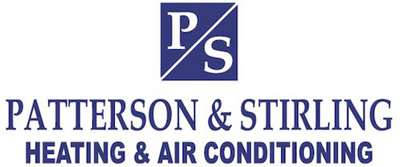
You shouldn’t have to sacrifice comfort or empty your wallet to keep your residence at the right temp during warm days.
But what is the best setting, exactly? We discuss suggestions from energy pros so you can find the best temperature for your loved ones.
Here’s what we advise for the most energy-efficient setting for air conditioning in Erie.
Recommended Thermostat Settings for Summer
Most people find placing the thermostat at 72-73 degrees is most comfortable. However, if there’s a major difference between your indoor and outside temperatures, your AC costs will be bigger.
These are our recommendations based on the U.S. Department of Energy (DOE) and ENERGY STAR®.
While at home: 78 degrees. While that appears hot, there are ways you can keep your home pleasant without having the AC running constantly.
Keeping windows and window treatments shut during the day keeps cold air where it needs to be—inside. Some window treatments, including honeycomb shades or plantation shutters, are created to provide extra insulation and improved energy savings.
If you have ceiling fans in your house, the DOE says you can increase thermostat temperatures about 4 degrees hotter without compromising comfort. That’s since they refresh by a windchill effect. As they cool people, not rooms, switch them off when you move from a room.
If 78 degrees still appears too warm on the surface, try doing a test for approximately a week. Get started by increasing your temperature to 78 degrees while you’re at your residence. Then, steadily lower it while following the suggestions above. You may be shocked at how cool you feel at a hotter temperature setting.
While away: 88 degrees. There’s no need to keep the air conditioner on all day while your home is empty. Turning the temp 7–10 degrees warmer can save you as much as 5–15% on your cooling costs, according to the DOE.
When you get home, don’t be tempted to switch your thermostat below 78 to cool your house more rapidly. This isn’t effective and usually produces a bigger electricity cost.
A programmable thermostat is a helpful method to keep your temp under control, but you need to set programs. If you don’t set programs, you risk forgetting to move the set temperature when you leave.
If you want a hassle-free solution, think about buying a smart thermostat. This thermostat works with with your phone, so it is aware when you’re at home and when you’re gone. Then it automatically modifies temperature settings for the best savings. How much exactly? An estimated $180 each year on heating and cooling, according to ENERGY STAR.
Another advantage of having a smart thermostat? You can use your phone to watch and regulate temperature settings from nearly anywhere.
While sleeping: Around 70 degrees. While ENERGY STAR suggests 82 degrees, that may be too uncomfortable for the majority of families. Many people sleep better when their bedroom is chilled, so that’s why the National Sleep Foundation recommends 60–67 degrees. But that might be too cool, due to your clothing and blanket preference.
We advise following a similar test over a week, moving your temp higher and steadily decreasing it to locate the ideal temperature for your house. On cool nights, you could discover keeping windows open at night and using a ceiling fan is a better option than using the AC.
More Approaches to Save Energy This Summer
There are extra ways you can spend less money on utility bills throughout the summer.
- Buy an energy-efficient cooling system. Central air conditioners only work for about 12–15 years and become less efficient as they get older. An upgraded air conditioner can keep your house comfier while keeping electricity costs down.
- Set regular air conditioner maintenance. Regular air conditioner maintenance keeps your system working like it should and may help it run more efficiently. It may also help lengthen its life span, since it helps professionals to uncover seemingly insignificant issues before they lead to a major meltdown.
- Change air filters regularly. Follow manufacturer instructions for switching your air filter. A clogged filter can result in your system short cycling, or run too often, and increase your utility.
- Check attic insulation levels. Nearly 90% of homes in the United States don’t have proper insulation, according to the Insulation Institute. The majority of southern climates should have 13–14” of attic insulation, while northern climates need 16–18”.
- Have your ductwork inspected. Ductwork that has separated over time can seep cool air into your attic, walls or crawl space. This can create huge comfort troubles in your residence, such as hot and cold spots.
- Seal cracks, doors and windows. Keep warm air where it should be by closing cracks. You can also caulk or weather strip doors to seal more cold air within your home.
Conserve More Energy This Summer with Patterson & Stirling
If you are looking to use less energy during warm weather, our Patterson & Stirling pros can provide assistance. Reach us at 814-308-0416 or contact us online for more information about our energy-saving cooling solutions.


